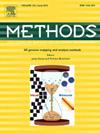Microplate fluorescence quenching for high throughput screening of affinity constants – Serum albumins and zearalenones case study
IF 4.2
3区 生物学
Q1 BIOCHEMICAL RESEARCH METHODS
引用次数: 0
Abstract
Measurements of changes in fluorescence signal is one of the most commonly applied methods for studying protein-ligand affinities. These measurements are generally carried out using cuvettes in spectrofluorometers, which can only measure one sample at a time. This makes screening procedures for multiple ligands and proteins extremely laborious, as each protein must be measured with multiple ligand concentrations, and usually in triplicate. Moreover, multiple equations exist to extract the affinity constants and other information from the data, and their underlying assumptions are often disregarded. In this study, the affinities of human, bovine and rat serum albumins for the mycotoxin zearalenone and five of its common derivatives were measured in 96-well microplates, allowing quick measurements of multiple samples using less reagent amounts. In comparison to measurements using a cuvette in a spectrofluorometer, the microplate method was shown to reproduce the affinity constants accurately. The results were discussed in terms of common pitfalls regarding experimental setup and available equations to analyze protein-ligand binding in fluorescence quenching assays. The commonly used Stern-Volmer equation was discussed in detail and the results used to show how inaccurate it is when a fluorescent protein-ligand complex is formed, and when other underlying approximations are ignored.

用于高通量筛选亲和常数的微孔板荧光淬灭技术--血清白蛋白和玉米赤霉烯酮案例研究。
测量荧光信号的变化是研究蛋白质与配体亲和关系最常用的方法之一。这些测量通常使用荧光分光计中的比色皿进行,一次只能测量一个样品。这使得多种配体和蛋白质的筛选过程非常费力,因为每种蛋白质必须用多种配体浓度进行测量,而且通常是三份。此外,存在多个方程来从数据中提取亲和常数和其他信息,而它们的基本假设往往被忽视。在本研究中,人、牛和大鼠血清白蛋白对真菌毒素玉米赤霉烯酮及其五种常见衍生物的亲和力在96孔微孔板上进行了测量,允许使用较少的试剂量快速测量多个样品。与在荧光分光计中使用比色皿进行测量相比,微孔板方法可以准确地再现亲和常数。结果讨论了关于实验设置和可用的方程来分析荧光猝灭测定中的蛋白质配体结合的常见陷阱。详细讨论了常用的斯特恩-沃尔默方程,并使用结果来显示当荧光蛋白-配体复合物形成时,以及当其他潜在的近似被忽略时,它是多么不准确。
本文章由计算机程序翻译,如有差异,请以英文原文为准。
求助全文
约1分钟内获得全文
求助全文
来源期刊

Methods
生物-生化研究方法
CiteScore
9.80
自引率
2.10%
发文量
222
审稿时长
11.3 weeks
期刊介绍:
Methods focuses on rapidly developing techniques in the experimental biological and medical sciences.
Each topical issue, organized by a guest editor who is an expert in the area covered, consists solely of invited quality articles by specialist authors, many of them reviews. Issues are devoted to specific technical approaches with emphasis on clear detailed descriptions of protocols that allow them to be reproduced easily. The background information provided enables researchers to understand the principles underlying the methods; other helpful sections include comparisons of alternative methods giving the advantages and disadvantages of particular methods, guidance on avoiding potential pitfalls, and suggestions for troubleshooting.
 求助内容:
求助内容: 应助结果提醒方式:
应助结果提醒方式:


